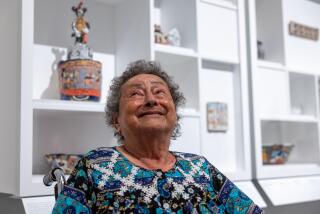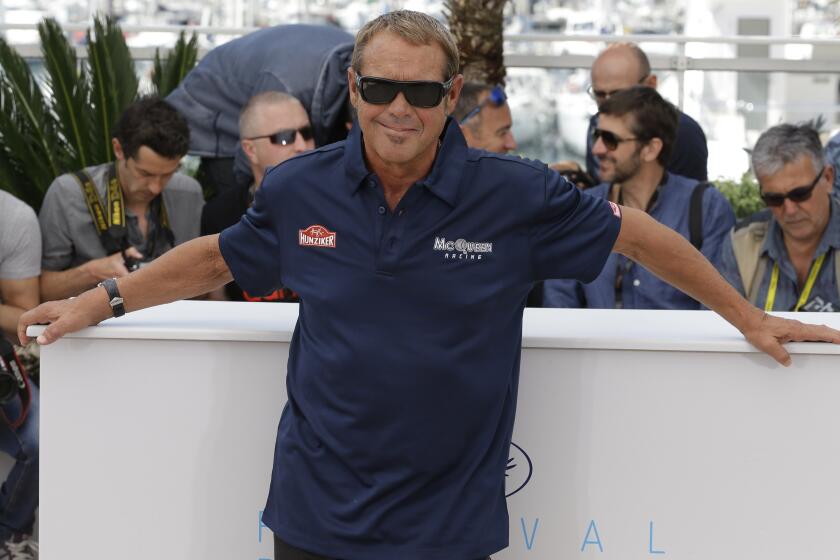Ruth Greenberg dies at 93; artist ran Tidepool Gallery in Malibu
Ruth Greenberg, a sculptor and basket weaver who for more than two decades ran Malibu’s Tidepool Gallery, a veritable museum devoted to shells and other ocean artifacts, has died. She was 93.
Greenberg died Oct. 18 of complications related to old age at her home in West Los Angeles. Her family announced her death this week.
The oceanfront shop she opened on Pacific Coast Highway in 1969 with her sister-in-law, Jan Greenberg, grew to hold one of the largest collections of specimen and commercial shells on the West Coast.
They kept it open until 1991, operating with a business philosophy that was more about getting “a kick out of the people,” Jan once said, than selling a $600 shell.
As Ruth Greenberg told The Times in 1982: “The kid who comes in with 25 cents to buy a shell for his mother is just as important to us as the collectors.”
Her easy way with young patrons who were often told “don’t touch” by their parents was evident in the “Do Touch” basket she kept filled with shells for children to play with.
She set up a display case for serious collectors with shells that cost as much as $6,000 and one with $10 options for those “horrified by the prices in the collector’s case.”
Shells were everywhere -- they made up well more than half of the inventory -- but there was also plenty of ocean-related art that made its way into the gallery if the sisters-in-law agreed that they liked it.
An inveterate beachcomber, Greenberg traveled the world hunting for shells -- paddling ashore on Pacific islands or going out with the head of a Japanese fishing fleet.
She became such an expert that she spent a year as president of Conchologists of America, a society for seashell enthusiasts.
When she bought a second home in Northern California in the 1970s, it was in the coastal town of Trinidad.
“The ocean does something to everything it touches,” Greenberg said in 1980 in The Times. “It softens all the edges. It blurs everything.”
Ruth Cooperman was born in 1915 in Minneapolis to Ben Cooperman, a cigar salesman, and his wife, Anne, a receptionist.
At the University of Minnesota, Greenberg studied to be a medical technician and married Mayer Greenberg in 1935. They divorced in the mid-1960s.
As an artist, her earliest work was in carving stone and wood, and she displayed pieces at the Walker Art Center in Minneapolis in the mid-1940s.
Back problems forced Greenberg to give up sculpting after she moved to Los Angeles in 1947. She studied oil painting and worked with other media, including fiber arts.
In her 70s, she turned to weaving small baskets from materials gathered in the wild, and several of her pieces are in museum collections, according to Reed College in Oregon.
She held an endowed chair in American Indian Studies in the anthropology department at the college, where her son Daniel is an alumnus.
Native American baskets and rattles are among the thousands of small pieces -- often natural objects -- that she collected.
“She was the Auntie Mame of her time,” her son said. “She was a free spirit . . . and one of the nastiest Scrabble players who ever walked this earth.”
In addition to her son Daniel of Los Angeles, Greenberg is survived by another son, Phillip of Berkeley, and a granddaughter.
Memorial donations may be made to the Racine Art Museum, www.ramart.org, or the Northcoast Environmental Center, www.yournec.org.
Nelson is a Times staff writer.
More to Read
Start your day right
Sign up for Essential California for the L.A. Times biggest news, features and recommendations in your inbox six days a week.
You may occasionally receive promotional content from the Los Angeles Times.








